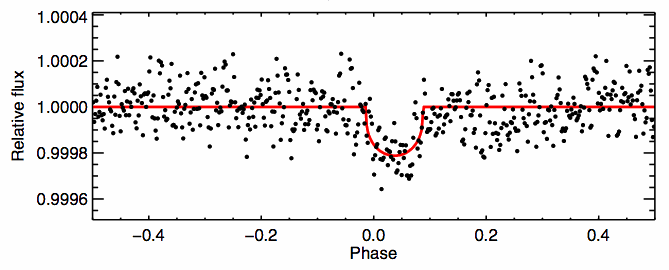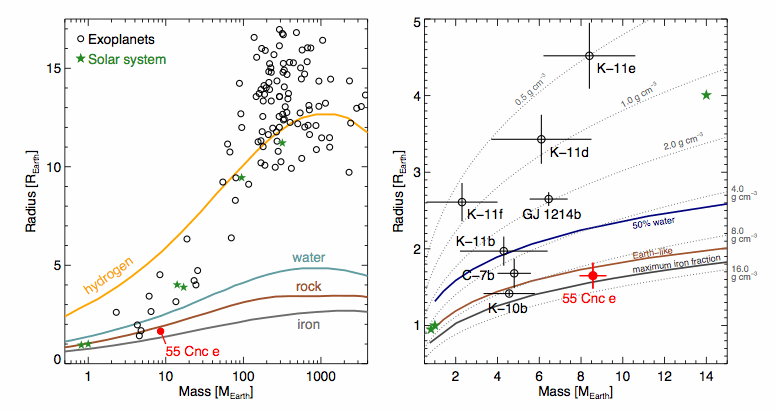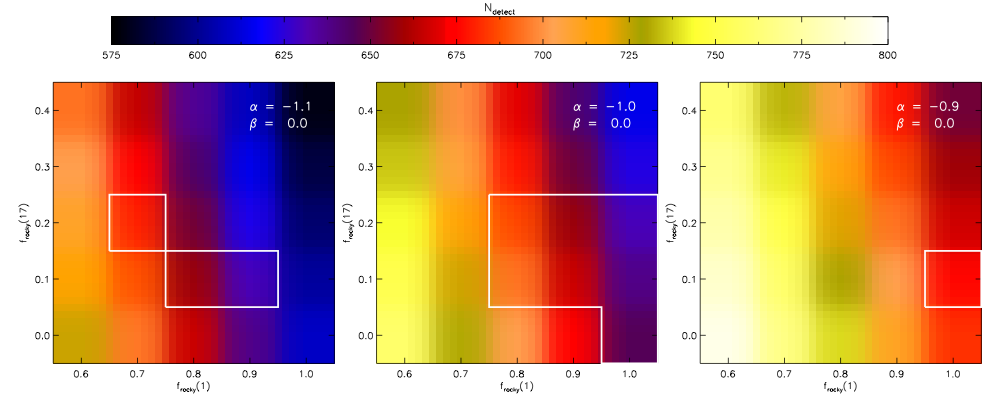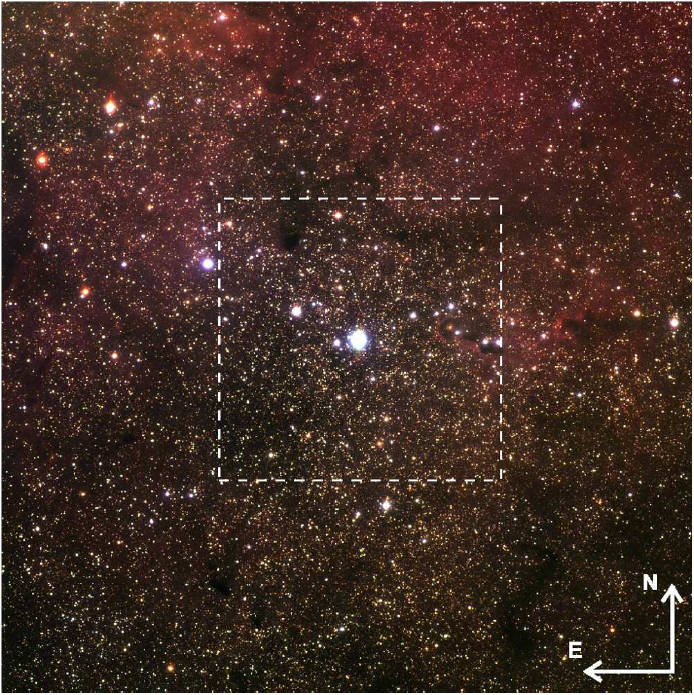Our story begins back in 2004 when the discovery of a 4th planet around the star called 55 Cancri, 55 Cnc e (McArthur et al. 2004, see also Fischer et al. 2008). This planet was reported to have a period of 2.8 days with a minimum mass of 14 Earth masses, but as we’ll see later, this wasn’t to be the final word on 55 Cnc e. The authors used the radial velocity method to find this planet and the four others in the system, a technique that relies on detecting the motion of the star induced by orbiting planets. Both the planets and the star orbit a common point somewhere in between them called the center of mass, and it’s the star’s motion towards and away from us (it’s radial velocity) that we can detect. The star moves very little (velocities are usually measured in meters per second!), but we can still detect this stellar “wobble” for many exoplanet systems.

Periodogram of 55 Cnc e from MacArthur et al. (2004). Peaks indicate periods (frequencies) present in the data. But is this peak a true planet signal?
Often, a periodogram is used to understand the radial velocity measurements; this type of plot depicts the frequencies present in a data set. For example, if there is a planet on a 2.8 day orbit, you would expect to see a peak corresponding to this period. In the periodogram of 55 Cnc below, it is quite obvious that there is a peak there.
But does that mean we have really found a planet with this period?
Dawson & Fabrycky (2010) argue not necessarily. The problem is that there are lots of frequencies other than the star’s gravitational interactions with its planets superimposed on the data. This produces false signals masquerading as planets, called aliases. If we could observe continuously, this wouldn’t be a problem, but we can’t. For example, a daily alias results from only being able to observe at night, while the fact that a single telescope can only observe the star for part of the year gives rise to yearly aliases. Because aliases appear at frequencies related to the true frequency, it is difficult to disentangle the false and true signals. Dawson & Fabrycky demonstrate that the highest peak in the periodogram is not necessarily the true signal and present a method by which to determine which peaks are aliases and which ones aren’t.
Dawson & Fabrycky apply their method of analyzing periodograms to 55 Cnc and discover that the 2.8 day signal is in fact an alias of an even shorter period planet, at a period of 0.7 days. They go on to remodel the 55 Cnc system and demonstrate that their model is a superior fit to the data. If 55 Cnc e does in fact have such a short period, the probability that this planet transits its host star is now 1 in 3. That’s worth following up!

Folded light curve showing the transit of 55 Cnc e, taken with the MOST micro-observatory. The transit time is in good agreement with that predicted by Dawson & Fabrycky (2010).
This is where Winn et al., in a paper posted to the arxiv on Thursday, pick up the story. These authors observed 55 Cnc e almost continuously for 14.5 days in February from the Canadian space-based telescope MOST. At nearly the time predicted by Dawson & Fabrycky, a transit is seen, confirming the 0.7 day period. Combining the transit data with two decades worth of high-precision radial velocity measurements, the physical properties of 55 Cnc e are well-determined: it has a mass of 8.6 Earth masses and a radius of 1.6 Earth radii, making its average density a staggering 11 g/cc. With this high density, 55 Cnc e is a rocky-iron planet: similar in composition to our own planet. (It won’t be anything like Earth, however: located as it is so close to a hot star, it is the very definition of inhospitable!) The figures below present 55 Cnc e in the context of theoretical models and other known planets.
One final note: the star 55 Cnc can be seen without the aid of any telescopes. As the authors conclude, “there is some pleasure in being able to point to a naked-eye star and know the mass and radius of one of its planets.”

“Masses and radii of transiting exoplanets. Open circles (blue) are previously known transiting planets. The filled circle (red) is 55 Cnc e. The stars (green) are Solar system planets, for comparison. Left.—Broad view, with curves showing mass-radius relations for pure hydrogen, water ice, silicate (MgSiO3 perovskite) and iron, from Figure 4 of Seager et al. (2007). Right.—Focus on super-Earths, showing contours of constant mean density and a few illustrative theoretical models: a “water-world” composition with 50% water, 44% silicate mantle and 6% iron core; a nominal “Earth-like” composition with terrestrial iron/silicon ratio and no volatiles (Valencia et al. 2006, Li & Sasselov, submitted); and the maximum mantle stripping limit (maximum iron fraction, minimum radius) computed by Marcus et al. (2010).” –caption from Winn et al. 2011





A new paper by Demory et al. reports the detection of 55 Cnc e in Warm Spitzer data (which was acquired in January): http://arxiv.org/abs/1105.0415
Curiously, the radius inferred from this transit data yields a radius 1.3 times larger than the value reported in Winn et al. The mystery deepens!